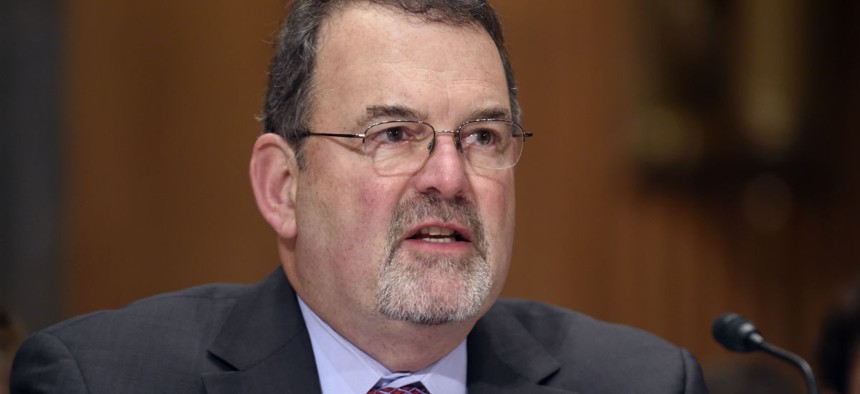What Will Trump’s Tech C-Suite Look Like?

Federal CIO Tony Scott Susan Walsh/AP
It’s unclear whether the president-elect will replace the chief technology officer or other positions created during Obama’s term.
For the past few years, President Barack Obama’s White House has attracted a slew of private-sector technology heavyweights, often poached from a recurring cast of Silicon Valley stalwarts such as Twitter and Google.
Part of the Obama administration’s legacy has been to create new White House-based executive roles dedicated to technology. Obama appointed the first federal chief information officer, chief technology officer and a chief information security officer, and others within other offices, such as chief digital officer and chief data scientist.
But as President-elect Donald Trump fills out his tech team—including adviser and Silicon Valley venture capitalist Peter Thiel—it remains unclear which of the Obama administration’s tech-themed C-suite appointee positions will be replaced.
» Get the best federal technology news and ideas delivered right to your inbox. Sign up here.
Incoming administrations can generally create new positions within the White House, said Martha Joynt Kumar, director of the White House Transition Project, an organization that studies presidential handoffs and provides that information to White House staffs.
“The structure of the White House is not set in law,” she told Nextgov. “You [can] have new titles, you can drop offices, create new ones. That gives the president the flexibility to focus on those issues that he thinks are important to him, and how he’s dealing with the government.”
Under Obama, the White House was creative about C-suite titles and positions. Federal CIO Tony Scott’s official title was listed as administrator of e-government and information technology in the Government Publishing Office’s "Plum Book." Federal CTO Megan Smith was an assistant to the president, and Chief Data Scientist DJ Patil was listed as the deputy chief technology officer for data policy.
"So many of the new White House technology roles have been put into place over the last 4-8 years … [and] are so closely tied and branded to the current outgoing administration,” Julie Anderson, principal at AG Strategy Group and co-lead for the Veterans Affairs Department's Agency Review Team during the 2008-2009 Presidential Transition Team, told Nextgov.
If Trump chooses to replace tech positions in the White House, “they would have a different flavor, the purpose may be adjusted, there would be different name,” she predicted.
Except for the CTO. Obama made that position permanent when he signed the American Innovation and Competitiveness Act on Jan. 6. A new nominee now faces Senate confirmation.
Trump has made a couple of notable tech appointments so far, in some cases creating new positions. Earlier this week, he named Baltimore real-estate developer Reed Cordish—formerly a partner at The Cordish Companies whose portfolio includes the Maryland Live! Casino and Hotel—assistant to the president for intragovernmental and technology initiatives. In that role, Cordish will manage inter-agency programs and "technological innovation and modernization,” according to the transition team.
And Trump filled at least one position created under Obama: chief digital officer. That role, currently held by Jason Goldman whose professional background includes Twitter and Google’s blogging platform Blogger. On Thursday, the transition team announced Gerrit Lansing, formerly chief digital officer at the Republican National Committee, will fill the same role at the White House.
For at least one industry veteran, Trump’s senior tech appointments indicate they will recognize “the importance of technology to transform the way government does its business,” Alan Balutis, Cisco’s Global Public Sector Practice director, told Nextgov.
He noted the presence of senior federal tech officials on Trump’s agency landing teams, including the General Services Administration’s former CIO Casey Coleman and former Administrator of the Office of Electronic Government and Information Technology Karen Evans, suggests Trump will prioritize a technology-forward agenda—even if he hasn’t filled out his White House tech advisers.


